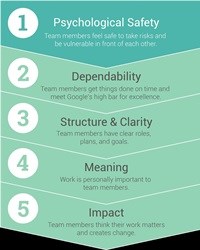Whether in the workplace, professional sports, or your local community, team building requires a keen understanding of people, their strengths and what gets them excited to work with others. Team building is both an art and a science and the leader who can consistently build high performance teams is worth their weight in gold.
IT and manufacturing seem to be sectors with a particular vulnerability for dysfunctional teams. If left to their own devices sales and engineering teams will constantly be at one another’s throats. We’ve all witnessed a frantic sales person trying to get technical answers from engineering to help close the deal.
The engineer has a dozen specific questions before he can give an answer – rightfully so as engineering is an exact science. The sales person can see the deal slipping away as each of these questions can potentially cause the deal to go cold. Again, perfectly reasonable as the sales person is there to create value. Both are motivated to help the client – but neither sales person nor engineer sees that in their colleague’s behaviour.
Perhaps Google – literally – might have the answer. Over a period of two years Google conducted 200+ interviews with Googlers (their employees) and looked at more than 250 attributes of 180+ active Google teams. They were pretty confident that they’d find the perfect mix of individual traits and skills necessary for a stellar team - take one Rhodes Scholar, two extroverts, one engineer who rocks at AngularJS, and a PhD. Voila. Dream team assembled, right?
{{IMAGE}}
They were dead wrong. Who is on a team matters less than how the team members interact, structure their work, and view their contributions. So much for that magical algorithm!
Their research found the following.
1. Psychological safety: Can we take risks on this team without feeling insecure or embarrassed?2. Dependability: Can we count on each other to do high quality work on time?
3. Structure & clarity: Are goals, roles, and execution plans on our team clear?
4. Meaning of work: Are we working on something that is personally important for each of us?
5. Impact of work: Do we fundamentally believe that the work we’re doing matters?
The above five findings can be used as both a guide and a scorecard to ensure that your team remains effective.
Take time to analyse your various teams and see where improvements can be made to ensure the longevity and health of your organisation.




























